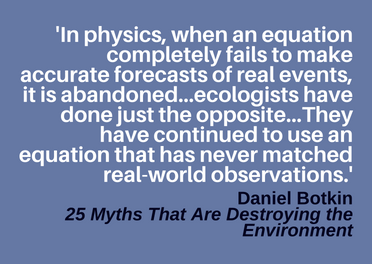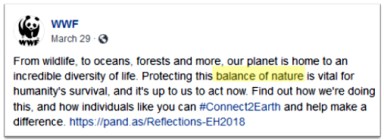Back on track - this thread is all about conservation measures for SRKW. Potentially coming to an area you fish soon...F
in Fish Closures from Long Beach, South Bank, Big Bank, Rats Nose all the way to Swiftsure.
As everyone will recall, there was an extensive consultation process prior to the Recreational Fishery closures long called for by the Green ENGO groups. Despite a lot of good proposals to create win/win solutions, the Minister moved ahead with closures even more restrictive than was put up for discussion in the public consultation process. Politically motivated!
Now we are being "consulted" again, same process same outcome. They are now talking about designating the area from Long Beach all the way to Swiftsure. So as you can expect, the token consultation process will churn out the predictable end result - expanded area closures. This will include Big Bank, Long Beach, South Bank, Rats Nose, all the way to Swiftsure.
The science they are using to justify the expansion is they have some passive acoustic monitoring data for Swiftsure showing whales are present 43% of the time they were monitoring this area. As for LaPerouse - no monitoring...just an assumption that because these areas are good salmon areas for commercial and recreational anglers they must therefore be of critical importance to whales...the only problem is the scientists can't find much observation data to show whales are there....that is because they are not using this area. I fish there extensively and have only on very rare occasion seen killer whales - they simply do not use this habitat, and yet DFO science takes the "don't confuse me with facts" approach and adopts "assumption based science."
Get ready for area fin fish closures all the way from Long Beach down to Swiftsure.
You can go online and use the feedback form - write anything. It takes no time at all...3 basic questions.
Please note - deadline for feedback is JULY 11
Here's some speaking points to consider:
·
“B.C.’s tidal water recreational fishery, combined with the freshwater fishery, is the largest and most valuable in Canada, valued at $18 billion annually. DFO issues over 350,000 tidal licences per year collecting $7.3 million in fees and the fishery employs around 8,400 British Columbian’s (as of 2012).”
·
Area SRKW Refuge Recreational Fin Fish Closures will cause significant socio-economic harm destroying jobs and economic spin off activities in small coastal communities like Ucluelet, Port Alberni, Bamfield, Port Renfrew, Sooke and Victoria.
·
Killer whales are only very rarely present on LaPerouse Bank, and there is no documented evidence from passive acoustic monitoring to clearly demonstrate this is actually critical habitat. DFO science is making an assumption that because areas of LaPerouse Bank are important areas for commercial and recreational Chinook fishing that they area similarly important to killer whales.
·
According to Passive Acoustic Monitoring (PAM), killer whales are only present on Swiftsure Bank 43% of monitored days between May to September – broad Area Refuge closures impact recreational fishing opportunity during significant periods where the whales are not present.
·
There is no comparative analysis that demonstrates the effectiveness of Area Closure vs a mobile “bubble” strategy
·
More effort is required to scientifically determine if indeed there is any less benefit to be achieved using a “bubble” strategy which is less impactful – striking a balance between protection and economic activity
·
In the past ______ years, I have fished areas of LaPerouse Bank, and observed killer whales only ____ times. (your observations are very important)
·
In the past ______years, I have fished areas of Swiftsure Bank, and observed killer whales only ____times. (your observations are very important)
·
Given these observations, there is little scientific data to support expanding the critical habitat areas, especially on LaPerouse Bank where killer whales are very rarely encountered and there is no scientific evidence to support DFO Science claims.
External review of the critical habitat section of the draft Amended Recovery Strategy for the Northern and Southern Resident Killer Whales in Canada
Current status: Open
Public consultation opened on June 12 2018 and will be closed to new input on July 11 2018.
Why we are seeking input?
Fisheries and Oceans Canada (DFO) and the Parks Canada Agency (PCA) would like your feedback on the revised critical habitat section (section 7) of the Species at Risk Act (SARA) draft Amended Recovery Strategy for the Northern and Southern Resident Killer Whales (Orcinus orca) in Canada.
Who we are seeking input from?
Indigenous peoples, stakeholders, ENGOs, other government agencies, researchers, and interested individuals are invited to provide feedback on the critical habitat section (section 7) of the draft Amended Recovery Strategy.
Key points for discussion
- The draft Amended Recovery Strategy updates the critical habitat for Northern and Southern Resident Killer Whales based on new science advice
- It identifies two additional areas of special importance as proposed critical habitat for Resident Killer Whales. These include:
- waters on the continental shelf off southwestern Vancouver Island, including Swiftsure and La Pérouse Banks (important for both Northern and Southern Resident Killer Whales)
- waters of west Dixon Entrance, along the north coast of Graham Island from Langara to Rose Spit (important for Northern Resident Killer Whales)
- The amendment also provides clarification of the functions, features and attributes for all critical habitat identified for Northern and Southern Resident Killer Whales
How to provide input
The deadline for submitting comments on section 7 (critical habitat) of the draft Amended Recovery Strategy is July 11, 2018. Please note, feedback is only being sought on section 7 (pages 55 to 68); feedback on other sections will not be considered at this time. If you choose to submit comments, please use the
online comment form.
After we have received your feedback and finalized the draft Amended Recovery Strategy, a proposed document will be posted to the SARA Public Registry for a 60-day public comment period. The Government of Canada will then have 30 days to incorporate comments before posting the final document on the Species at Risk Public Registry.
Related material


